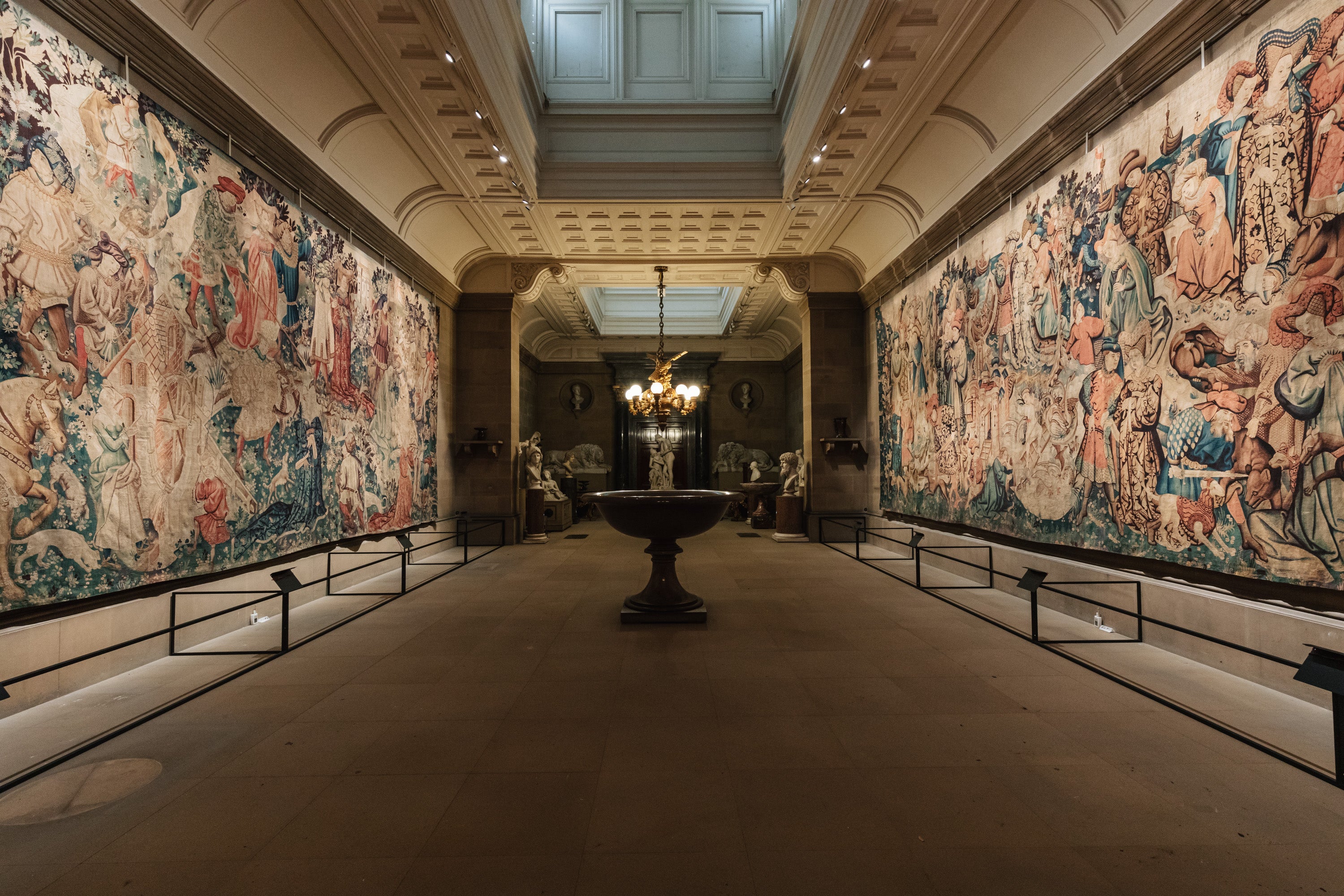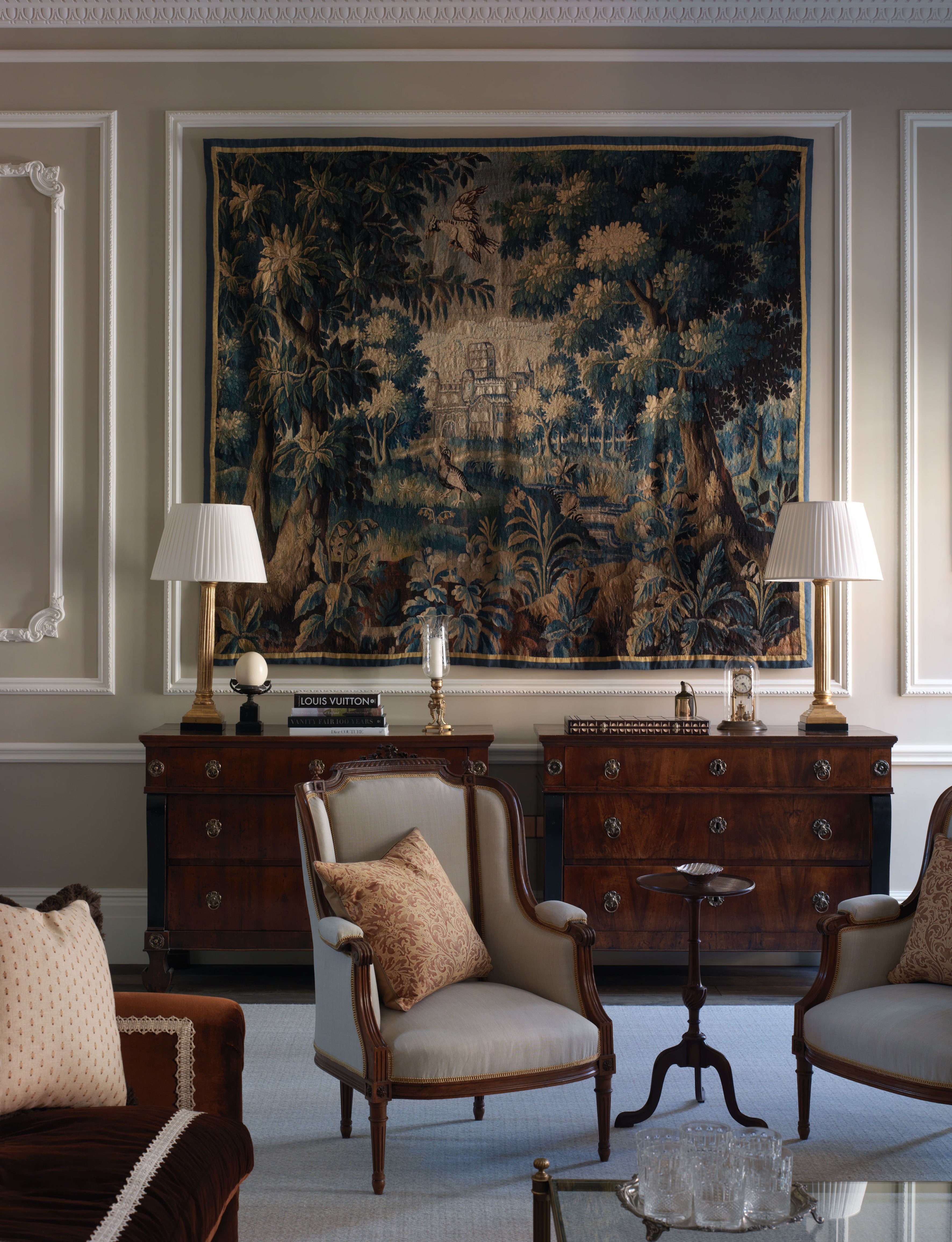Return of the Devonshire Hunting Tapestries to Chatsworth inspires a revival of old designs
Anya Cooklin-Lofting looks at how we can use tapestries in the home

Your support helps us to tell the story
From reproductive rights to climate change to Big Tech, The Independent is on the ground when the story is developing. Whether it's investigating the financials of Elon Musk's pro-Trump PAC or producing our latest documentary, 'The A Word', which shines a light on the American women fighting for reproductive rights, we know how important it is to parse out the facts from the messaging.
At such a critical moment in US history, we need reporters on the ground. Your donation allows us to keep sending journalists to speak to both sides of the story.
The Independent is trusted by Americans across the entire political spectrum. And unlike many other quality news outlets, we choose not to lock Americans out of our reporting and analysis with paywalls. We believe quality journalism should be available to everyone, paid for by those who can afford it.
Your support makes all the difference.In a hugely exciting turn of events, two medieval tapestries, which have been displayed at London’s Victoria & Albert Museum for the past 60 years, have recently returned to their rightful home of Chatsworth House, Derbyshire, for the remainder of 2021. The 11-metre Devonshire Hunting Tapestries, so-called for their ownership by the Devonshire family for almost 500 years, will be present for public perusal in the Sculpture Gallery at the baroque family seat, which opened in line with the lifting of restrictions on 18 May.
Visitors can access the tapestries with tickets to the house and gardens and enjoy the rare opportunity to glimpse these relics of 15th-century domestic decoration. Rare, because the Devonshire Hunting Tapestries are the only great hunting tapestries of the period to survive.
The richness and surprising saturation of the Devonshire Hunting Tapestries form a worthy palette for any contemporary interior. The shock of the draping, petroleum-blue robes of the noblemen complements the softened sages of the foliage and the warm browns and beiges of the lithe animals, living and dead. As works of art in themselves, tapestries lend warmth and texture to an interior, as well as an imposing presence that establishes and grounds a room, corridor or stairwell. You could just picture the most tasteful, eclectic, tea-stained English living room built on these classical, heritage colours, perhaps with a tapestry of its own.
Cheffins, a firm of property advisers, estate agents and auctioneers, has reported a recent growth in values for antique tapestries, which director Brett Tryner suggests has been triggered by the growing trend for pattern and colour in the home, spearheaded by some of the foremost interior designers working today. However, Tryner notes that this surge in demand is a reflection of the centuries-old rollercoaster of public perception endured by these apparently polarising works.
He says: “There was a revival of interest in tapestries in the 19th-century when Morris & Co produced a series for domestic interiors suiting the Arts & Crafts movement. However, tapestries fell out of favour in the 1960s when clean lines became the order of the day and tastes turned towards the more minimalist Danish and Scandinavian furniture makers. During this period, tapestries were sold off cheaply, or relegated to attic rooms and left to gather dust. At this point, tapestries could be purchased despite condition or age, perhaps for only a few hundred pounds.”
Now, Tryner tells me, these same tapestries are selling well into the thousands: “For example, the two verdure tapestries which were sold at the sale in April made around four times their estimates, both selling to private buyers.”

For many of the top interior designers, antique tapestries strewn with medieval references, stylised foliage, buttressed castles and mounted knights can be used to bring old-world charm to the most contemporary of rooms. In such design projects, the contrast between more contemporary pieces in close proximity to an antique tapestry can be arresting. Tryner says: “Although tapestries were originally created to cover vast draughty walls and to be lit by candlelight, they are now providing the perfect backdrop for more modern furniture even in smaller properties.”
Camilla Clarke, the creative director of London interior design studio Albion Nord, also believes that “juxtaposing a thickly woven tapestry in a light, contemporary setting has an incredible impact, highlighting its charm and beauty”. Albion Nord’s work often makes use of the pleasing contrast between old and new and in many recent projects, tapestries have lent instant richness and grandeur. Clarke says: “Tapestries can add so much to a room as vessels for history and storytelling executed with the highest craftsmanship. Stark, clear space around the work will emphasise the detail and skill involved in the piece.”
For Albion Nord, which has recently been commissioned by developer Qatari Diar on designs for townhouses at Chelsea Barracks, hanging tapestries involves a loose rule of scaling up. Clarke says: “When hanging a tapestry, consider the scale of the room and source options that fill the walls generously. Up-scaling with statement pieces like tapestries and artworks is a loose rule we use to ensure each room in our projects looks abundant with objects of beauty. There is nothing worse than a too-small piece of furniture or artwork!”

As with any valuable antique, new buyers may feel wary when it comes to choosing and investing in the tapestry of their dreams. There are companies such as Watts of Westminster that offer a range of tapestry-inspired textiles and wallcoverings using sophisticated digital photomosaic photography to give centuries-old designs a new, democratised lease of life, providing more risk-averse options for decorators. For example, its Tableaux Scéniques range of wallcoverings and fabrics is derived from original historic sources including works held by the Cité Internationale de la Tapisserie in Aubusson, France. Design company Andrew Martin’s collaboration with designer Kit Kemp, also presents a collection of hunting-tapestry-inspired murals, available in panels for simple application.
For those on the hunt for the real thing, Pandora Taylor, a London-based interior designer, suggests exercising caution when sourcing tapestries online. “There are so many reproductions out there claiming to be antique,” she says. “Ensure you see them in person but don’t be put off by any pieces that are worn or frayed, as this only adds to the charm and can often make them more affordable.”
Tryner advises those buying antique tapestries to keep an open and tolerant mind and less-than-perfect condition should be forgiven in most circumstances. Tryner’s final note of advice is to look for strong colour.
He says: “This indicates that it hasn’t been too bleached from hanging in direct sunlight. For people buying an antique tapestry, it is important to be understanding that many of these have not weathered the tests of time too well. So less-than perfect condition can be forgiven in a lot of circumstances. However, do look out for a good element of colour, with a piece which, ideally, hasn’t been too bleached if it has been hung in direct sunlight, or more detrimental damage such as moth.”
Join our commenting forum
Join thought-provoking conversations, follow other Independent readers and see their replies
Comments